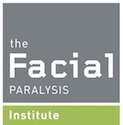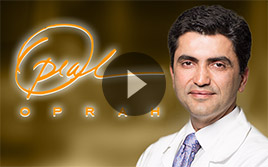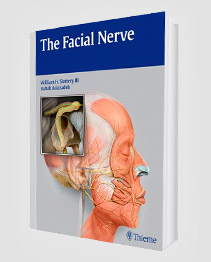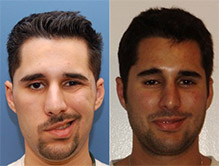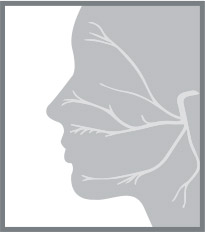Facial paralysis can impact the facial nerve function, leading to hearing loss and other symptoms that range from mild to severe. Those who experience any symptoms of facial paralysis should meet with a doctor. This ensures an individual can undergo a proper medical evaluation for their symptoms. The individual can then work with their doctor to treat their facial paralysis symptoms and find ways to prevent them from recurring.
To help patients who suffer from facial paralysis regain dynamic facial movement, The Facial Paralysis Institute is committed to providing the most advanced treatment options. Dr. Babak Azizzadeh is a world-renowned facial plastic and reconstructive surgeon and facial paralysis expert who customizes each patient’s treatment based on their circumstances. His top priority is to make sure his patients receive unparalleled levels of care. It’s no wonder patients travel from around the world to seek out his expertise.
After discussing the best ways to proceed during a patient consultation, Dr. Azizzadeh will utilize his team of facial plastic surgeons, otolaryngologists, neuro-otologists, neurosurgeons, head and neck surgeons, ophthalmologists, and physical therapists to achieve the objectives set forth in the treatment plan. Depending on the severity and longevity of his patient’s facial paralysis, Dr. Azizzadeh may recommend one or more facial nerve reconstruction and facial paralysis treatment options.
What Causes Facial Paralysis?
Causes of partial facial paralysis can be linked to nerve damage due to congenital conditions, trauma, or disease. Also, a viral infection can affect the facial nerve function, to the point where facial weakness or paralysis occurs.
Facial paralysis causes vary, and testing can be used to determine why a patient’s facial paralysis symptoms are occurring. In addition, a patient can receive insights into conditions that cause facial paralysis.
Conditions That Cause Facial Paralysis
Facial nerve disorders present with a variety of different functional and aesthetic problems such as facial nerve paralysis, synkinesis, and hemifacial spasm. There are several reasons why facial paralysis occurs, and they include:
-
- Bell’s Palsy: Bell’s palsy patients can experience facial weakness or paralysis on one side of the face. Common symptoms of Bell’s palsy include drooling, jaw pain, headaches, and changes in tear and saliva production.
- Acoustic Neuroma: An acoustic neuroma is a non-cancerous brain tumor. It can result in facial paralysis, along with hearing loss, headaches, and other physical symptoms.
-
- Parotid Cancer: A tumor can form on the parotid gland, leading to cancer. In this instance, a patient can experience facial swelling and/or numbness, along with weakness or paralysis in the face.
-
- Congenital Facial Nerve Palsy: Children can experience facial nerve palsy symptoms at birth. Congenital facial palsy can be classified as traumatic, developmental, bilateral, unilateral, complete, or incomplete.
-
- Moebius Syndrome: Moebius syndrome is a neurological condition that can make it difficult for a patient to produce natural facial expressions and control eye movement.
-
- Trauma: Trauma that can lead to facial paralysis falls into two categories: intracranial (within the skull) and extracranial.
-
- Lyme Disease: A patient can experience Lyme disease if he or she is bit by a blacklegged tick infected with Borrelia burgdorferi or Borrelia mayonii bacteria. Lyme disease can cause facial paralysis symptoms, as well as fatigue, fever, and other physical issues.
In this section, you can click on each of the etiologies that you are interested in and get more information.
Facial Nerve Anatomy
The facial nerve resembles a telephone cable and contains 7,000 individual nerve fibers. Each fiber carries electrical im-pulses to a specific facial muscle. Information passing along the fibers of this nerve allows us to laugh, cry, smile, or frown, hence the name, “the nerve of facial expression.”
House-Brackmann Grading System
Facial paralysis can result from trauma, infection, congenital, metabolic, neoplastic, toxic, iatrogenic, or idiopathic etiologies. Whatever the cause, the consequences for the patient can be devastating depending on the level of facial dysfunction. Several modalities exist to clinically rate the degree of facial function; including the widely used House-Brackman classification.
Lower Facial Reanimation
The goals of facial paralysis reconstruction include achieving symmetry at rest, dynamic facial movement, and appropriate eyelid function. This section aims to address the non-surgical and surgical methods of lower facial reanimation with focus on delineating static and dynamic options.
Request your consultation with Dr. Azizzadeh today
Call us at (310) 657-2203 to schedule an appointment.
Schedule a Consultation